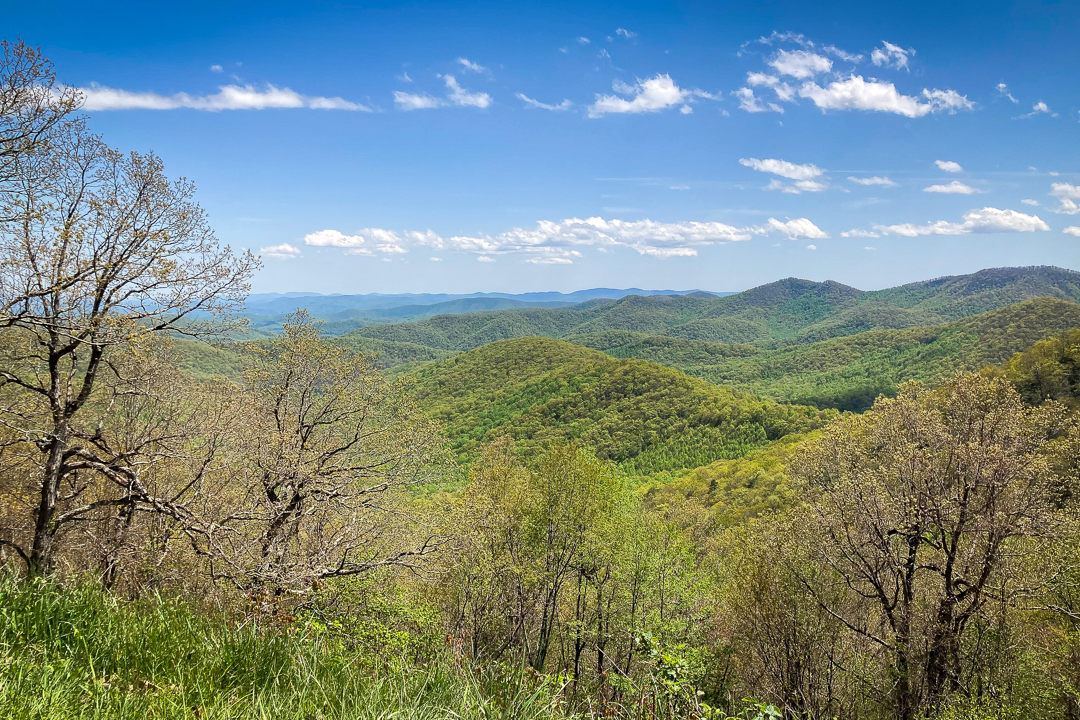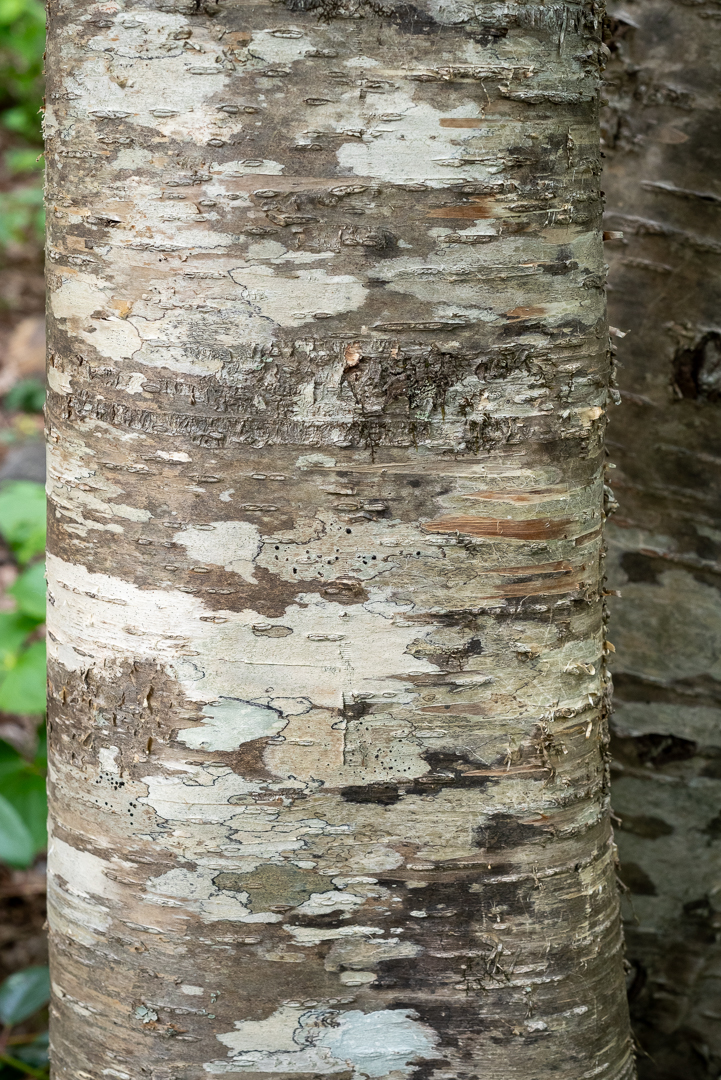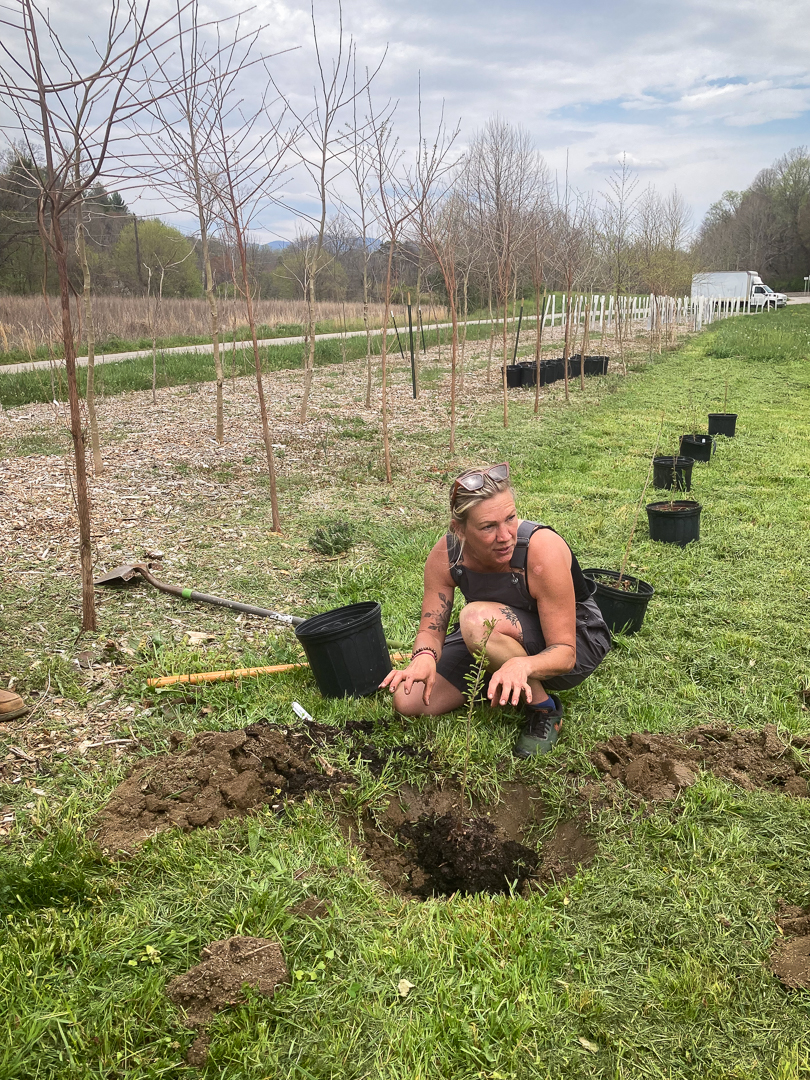A Guide to Tree Planting for Arbor Day

By Virginia Hunter, AmeriCorps Communications and Education Associate.
If plants are the foundation of any ecosystem, then trees are the cornerstones. In myriad ways, trees are vital to our lives here on Earth. Planting a tree can be a powerful gesture of hope and commitment to a brighter, more verdant future. Trees can even be planted to honor loved ones.
Yet as a society, we seem to know little about how to properly plant or care for trees, for all the value they provide. Henderson County Extension Agent Steve Pettis says “the top reason trees fail is mistakes by people.”
Many scientists have devoted themselves to studying the complexities of trees and their relationships with other living things, while foresters and arborists spend their careers caring for trees. But for those of us in vocations outside the tree realm, what are the basics we need to know to successfully bring trees into our yards or landscapes?
In honor of National Arbor Day, here are some key tips to help you plant trees that will thrive for many years into the future – perhaps even beyond your own lifetime.
1. Scout out your potential site. Do you have an area in mind where you’d like to plant a tree? Go walk that site and observe its characteristics. Here are some key features to note:
- Size of the area: How much space will the tree have to grow, both horizontally and vertically? Consider how much space the roots structure will have to grow, as well as the above ground parts of the tree.
- Amount of sunlight: Does the site get more than 6 hours of bright sunlight, is it deeply shaded, or is it somewhere in between?
- Amount of water in the soil: Is the soil well-drained? Or does it stay boggy and wet most of the time? Is it next to a creek that floods sometimes?

2. Choose a tree species that will be likely to thrive at your site. Consider planting mostly native trees and prioritizing trees that provide ecological value. Some key things to consider:
- Size: How large will this tree grow to be at maturity? What’s its general shape, or habit? Will your site provide ample space for this tree at maturity?
- Sunlight needs: Does this tree need full sun, partial shade, or deep shade?
- Water needs: Does this tree prefer well-drained soil? Or is it a wetland species that loves to have wet feet? Does it like riparian areas next to a creek?
- Ecological value: How does this tree species benefit the local food web? Does it provide berries, fruit, or nuts (also called mast) for wildlife to eat? Does it serve as a larval host plant for butterflies and moths? Does it provide shade and shelter?
- Aesthetics: Would you like flowers, fragrance or fall color? If you consider this in context, you can achieve a win-win-win: a tree that’s a beautiful addition to your landscape, provides lots of ecological benefit, and is a good fit for the site.
- Other practicalities: Serviceberries are excellent bird food, but the berries will probably stain a bench or sidewalk below it. Pawpaw trees have edible fruits and serve as larval hosts for tiger swallowtail butterflies, but their flowers are pungent. Walnuts are delicious, but the roots of walnut trees put out a chemical that inhibits most other plants from growing around it. Read up on each tree’s unique characteristics – get to know their personalities, so to speak – and plant accordingly!
- Resources: These guides can help you research trees to plant:
- NC Extension Gardener’s Plant Toolbox: Use this site to read up on a specific tree you already have in mind using the search bar, or use their Find a Plant tool to research possibilities by different characteristics like light, soil drainage, etc.
- The National Wildlife Federation’s Plant Finder tool and Audubon’s Native Plants Database will both recommend trees native to your area based on the benefits they provide to pollinators, moths, butterflies, birds, and other wildlife.
- Wildflowers & Plant Communities of the Southern Appalachian Mountains & Piedmont by Timothy P. Spira. In the wild, trees don’t grow in isolation, but are a part of larger ecosystems. This book is a great cross-reference for individual species and will help you understand trees within the context of natural communities in our region.

3. Plant most trees in the spring or early fall, avoiding temperature extremes. While we often think of tree planting as a springtime activity, early fall can also be an ideal time of year to plant trees. To thrive, a newly planted sapling needs to establish its root system as soon as possible. During the spring and summer, most trees shift their energy into growing branches, leaves, flowers, and fruits. In fall and winter, trees put more energy into root growth, while their above ground parts are in a state of dormancy. So planting in early fall before the first frost gives a tree time to establish a strong, healthy root system. Planting during the heat of summer is more likely to stress the sapling, while planting in winter when the ground is frozen will prevent its roots from growing properly. While timing also depends on the species that you’re planting as well as climate, this is a good general rule of thumb for our region.
4. Purchase trees from reputable nurseries and avoid cultivars. Thankfully, Conserving Carolina has put together an awesome guide for Where to Get Native Plants, updated yearly. Several of these nurseries do stock trees, including Painters Greenhouse and Carolina Native Nursery. Avoid cultivars, because they may not have the same ecological benefits as true native species. For example, scientists just don’t know if a dogwood cultivar with pink flowers will attract the same pollinators that a true native dogwood with white flowers would. Additionally, cultivars are often clones. Planting clones lowers the genetic variety that helps a species to be healthy and resist disease.

5. Consider younger trees or bare root whips. Keep in mind that bigger, older trees aren’t necessarily better. Older trees do provide some instant gratification, but they’re more expensive, harder to transport, and also more susceptible to transplant shock. Younger trees require a bit of protection during their first years, but they’ll have an easier time adapting to their new home. They’re also dramatically less expensive. If you’re trying to reforest a large area, the NC Forest Service offers bare root whips for less than a dollar per tree. Whether you purchase big or small trees, protect them in between purchase and planting. Don’t let them sit in a hot car, or lay them on their side in the sun – their trunks can actually get sunburned!

6. After all that planning and prep work, you’re finally ready to plant your tree! But how to do it right?
- Gather your tools. You’ll need a sharp shovel and a pair of gardening gloves.
- Gently pull your tree out of its pot, burlap, or any other wrapping. Roll the side of the pot along the ground to loosen it if necessary. If the roots look like they’re wrapping around themselves at the bottom, gently loosen them. It’s essential to remove all wrapping from the tree. Even biodegradable wrapping like burlap can prevent the roots from growing outward as they should. The roots will instead wrap around themselves, slowly strangling the tree and causing it to die an untimely death.
- Dig a wide, shallow hole three times as wide as the diameter of the tree’s pot or root ball, and just deep enough for the roots to be covered. So for example, if your tree came in a pot one foot wide, your hole needs to be three feet wide. The roots of most trees grow outwards more than downwards, so you are basically breaking up the soil to let these roots spread out.
- Set your tree in the hole to test its depth. The boundary between the tree’s trunk and its roots should be slightly above ground level, because the tree’s own weight will cause it to settle. Also, burying part of the trunk may cause it to rot. Quickly test the depth by setting the handle of the shovel across the hole, then getting down to eye level to see if the handle aligns with the top of the tree’s roots. Remember this saying from Painter’s Greenhouse: “Plant it high, it will never die; plant it low, it will never grow!”
- Backfill the hole with the dirt you dug out, along with any extra potting soil. Break up any clods of grass with your shovel and put them upside down so the grass will die. Most native trees are adapted to poor soils and need no soil amendments; in fact, fertilizing at this point may shock the tree.
- Gently tamp down the soil around the tree with your foot.
- Give your newly planted tree a good watering, especially if it’s been dry.
7. Look after the tree closely during its first few months to help it establish well. Make sure your tree gets regular, deep waterings, but don’t drown it. A light layer of mulch (no more than 2-3 inches) will help to regulate soil temperature and moisture, but avoid putting mulch against the trunk. A tree guard will help protect the sapling from being over-browsed by deer, or accidentally damaged by a weed-eater. Sara Millar of Asheville Greenworks recommends these grow tubes, which still let in light and air, and come with netting to prevent birds from getting trapped inside.
8. As the tree grows, protect its root system out to the dripline at minimum. Keep grass out of this radius, and instead lightly mulch or plant shade-loving understory plants. This will prevent the need to run a heavy lawnmower across the tree roots, which can compress the soil and damage roots over time. It will also provide a softer landing for moth and butterfly larvae as they drop from the tree to pupate on the ground.

Taking a thoughtful naturalist’s approach to tree planting might mean a little more work now, but in the long term it’s beneficial for you, for other creatures in nature, and for future generations. You could consider that time well spent!
Thank you to Henderson County Extension Agent Steve Pettis and Asheville Greenworks Community Forestry Coordinator Sara Millar, whose expertise on trees contributed much to this article.
Related: How To Plant An Oak